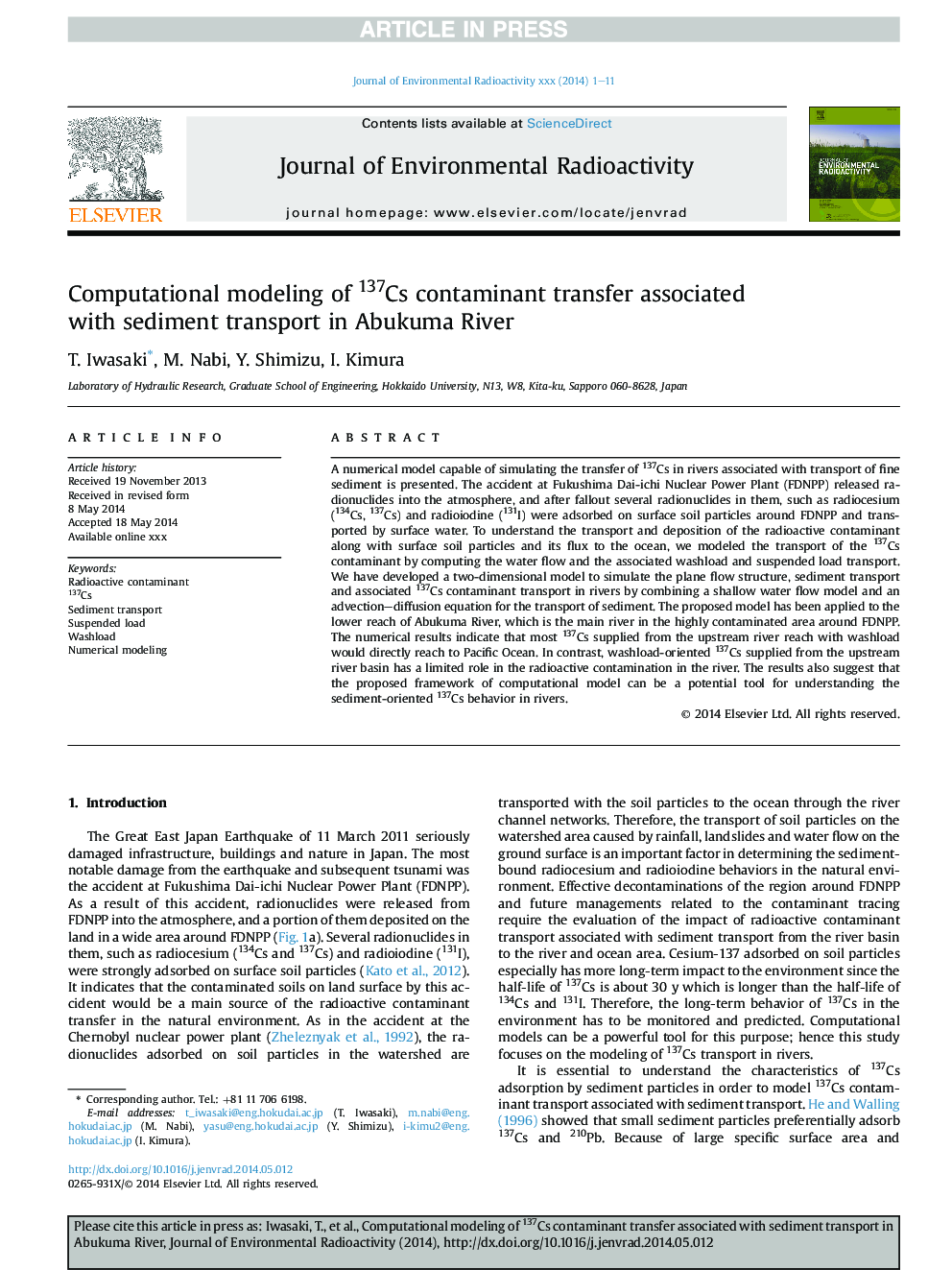| Article ID | Journal | Published Year | Pages | File Type |
|---|---|---|---|---|
| 8082687 | Journal of Environmental Radioactivity | 2015 | 11 Pages |
Abstract
A numerical model capable of simulating the transfer of 137Cs in rivers associated with transport of fine sediment is presented. The accident at Fukushima Dai-ichi Nuclear Power Plant (FDNPP) released radionuclides into the atmosphere, and after fallout several radionuclides in them, such as radiocesium (134Cs, 137Cs) and radioiodine (131I) were adsorbed on surface soil particles around FDNPP and transported by surface water. To understand the transport and deposition of the radioactive contaminant along with surface soil particles and its flux to the ocean, we modeled the transport of the 137Cs contaminant by computing the water flow and the associated washload and suspended load transport. We have developed a two-dimensional model to simulate the plane flow structure, sediment transport and associated 137Cs contaminant transport in rivers by combining a shallow water flow model and an advection-diffusion equation for the transport of sediment. The proposed model has been applied to the lower reach of Abukuma River, which is the main river in the highly contaminated area around FDNPP. The numerical results indicate that most 137Cs supplied from the upstream river reach with washload would directly reach to Pacific Ocean. In contrast, washload-oriented 137Cs supplied from the upstream river basin has a limited role in the radioactive contamination in the river. The results also suggest that the proposed framework of computational model can be a potential tool for understanding the sediment-oriented 137Cs behavior in rivers.
Related Topics
Physical Sciences and Engineering
Energy
Nuclear Energy and Engineering
Authors
T. Iwasaki, M. Nabi, Y. Shimizu, I. Kimura,
